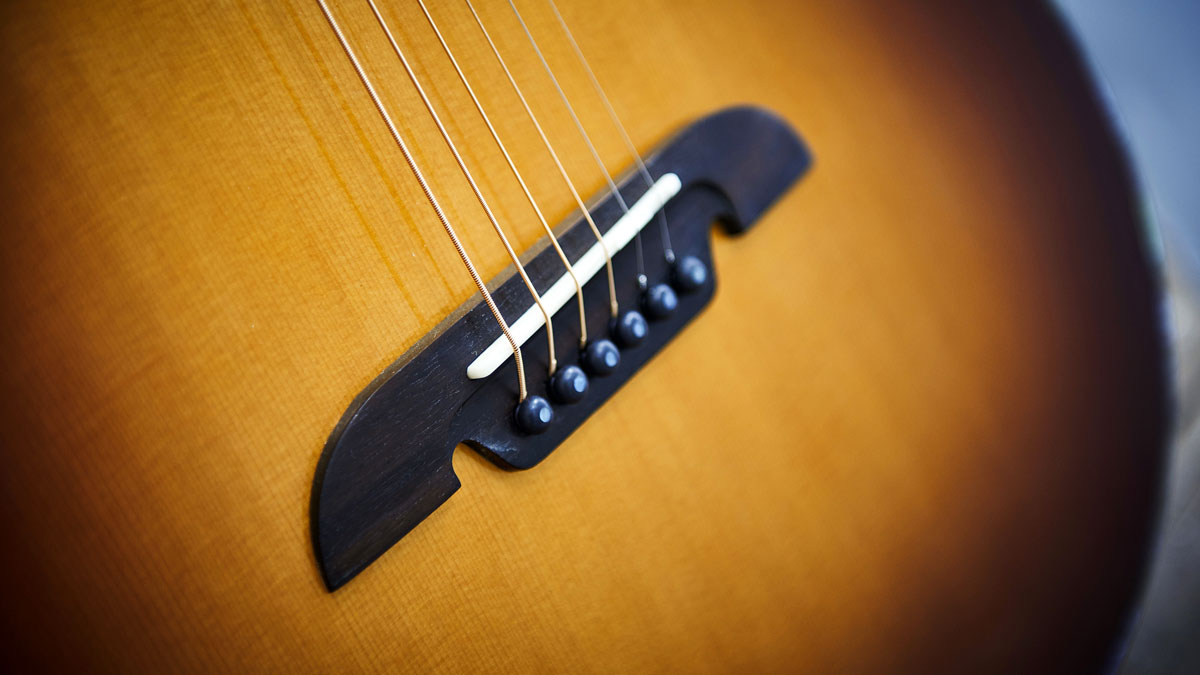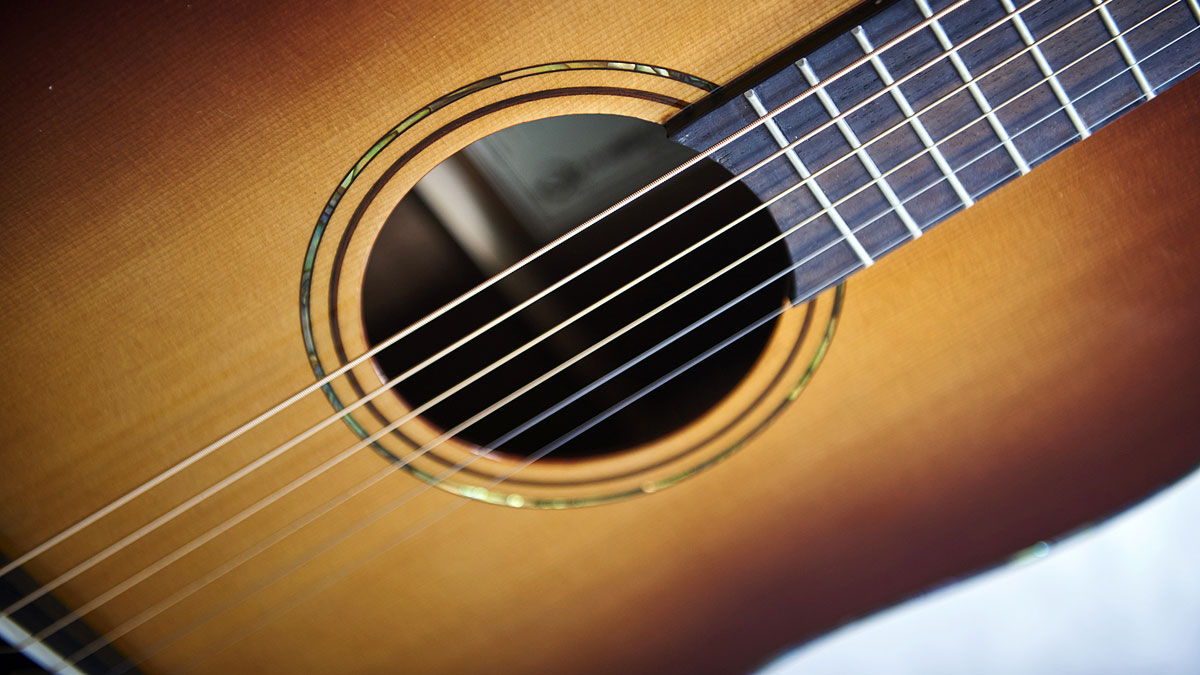MusicRadar Verdict
Different looks and a sweet tonality, especially for fingerpicking.
Pros
- +
Excellent spec for a very reasonable price. Dark and chunky low-end tones.
Cons
- -
Top-end lacks sophistication.
MusicRadar's got your back

Alvarez ARDA 1965 Dreadnought Slope Shoulder

Bridge

Top
Alvarez celebrates a big birthday this year: 50 years of producing instruments played by a diverse range of players, from Joe Bonamassa to Jerry Garcia and Ani DiFranco. The brand's USA parent company is St Louis Music, but for the most part its instruments are manufactured in China.
However, since February, Alvarez has been distributed in the UK by Blackstar - one of the world's biggest amp brands - so we're expecting to see a lot more of these guitars in our shops. Here, we have a lower priced, vintage-flavoured acoustic 12-fret guitar from the Artist range: a slope shoulder dreadnought that celebrates Alvarez's 50th year.
"The nut and saddle are real bone, too, a significant addition in our experience"
Our dreadnought follows pretty classic dimensions. The solid Sitka spruce top has been given a caramel-hued Sunburst and is positively bling-y with abalone purfling all around the body edge and soundhole.
The laminated acacia back and sides contribute to a whiff of rhinestone about this cowboy and it's a very handsome one at that.
To be fair, there are a couple of minor imperfections to the finish but this instrument is easy on the wallet so super close scrutiny is bound to reveal a blemish or two. On the upside, the dark binding along the fingerboard edges, which gives a very tidy edge to the 'board, is so sharp we have to get the magnifier out to see the join.
The ARDA 1965 also features Alvarez's 'bi-level' rosewood bridge. The saddle is elevated above the level of the bridge pins creating a sharper break angle, ensuring good contact and downward pressure of the strings over the saddle.
With attention to the bass end, the top has been constructed with forward shifted X bracing. The axis of the X is pushed closer to the soundhole than traditional patterns creating a larger exposed soundboard that is strengthened by a solid maple bridge plate.
Want all the hottest music and gear news, reviews, deals, features and more, direct to your inbox? Sign up here.
The nut and saddle are real bone, too, a significant addition in our experience. We've replaced plastic saddles with bone on some of our own boxes in the past and heard a noticeable improvement as a result.
Feel & Sounds
The instrument is supplied complete with strap buttons at the heel and base (unusual for pure acoustics), allowing you to easily strap on for performance.
"The low end is engagingly dark and chunky, particularly for heavier strumming"
Fans of 12 fret guitars believe (and many makers would agree) that they tend to have 'richer' tone than 14-fret designs because the bridge sits more centrally in the lower bouts. And while any acoustic is a sum of its design and parts, the dread pretty convincingly demonstrates a tubbiness of tone that could be attributed to its shorter neck and different bridge placement.
The low end is engagingly dark and chunky, particularly for heavier strumming. Staccato rhythms on barre chords feel meaty and there's a proper bump to the front of notes when picking with the pads of the fingers, a result of that forward shifted X bracing, maybe? The mids are well balanced so lead lines, though bright and lively, retain a good thickness even on the plain strings.
Being picky, it's in the top end where it lacks a little sophistication. When strumming gently with a pick, some of the richness falls away leaving the instrument sounding a tad shrill. Intonation, though, is excellent and it handled drop D tunings without fret buzz although the power and low-end definition suffered down in C.
The tuners handled themselves pretty well, too, but by the end of our test period one tuner had become creaky and stiff and another a little loose. Still, with open backs like these you can at least lubricate and tighten them.
This guitar is enormous fun. The styling cues don't come with too much baggage by way of tonal expectations and the ARDA 1965 manages to stand out while evoking a vintage aura. It also excels at softer- attack playing.
In such a crowded market, the confident performance, price and spec makes it a competitive performer and could be a very strong reason to augment your collection.